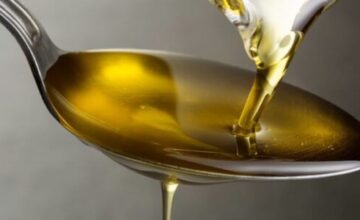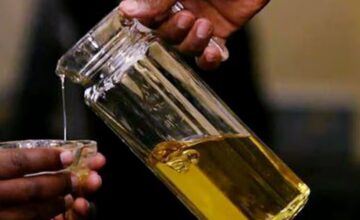
Olive oil is used in many restaurants & by well-known chefs for their top recipes that add flavour and nutritional value to the food that customers order.
However, olive oil has not been much used by consumers at home and for preparing foods; the reason is because of the several myths that consumers hear regarding olive oil.
Therefore let’s burst some of the most common myths about olive oil. We are sure that after reading all these myths about olive oil you will surely include it in your diet because of its wide range of uses and all the benefits it offers.
Myth 1: Dark green colour signifies purity of olive oil
Myth 2: Heating olive oil spoils its nutritional value
Myth 3: Olive oil has similar calories as other oils
Olive oil is rich in Good Fats (MUFA, PUFA), antioxidants, and has zero trans-fat/cholesterol. Extra Virgin Olive Oil a variant of different types of olive oils, is cold-pressed and contains essential vitamins for the body as well. Even though the calorie amount is almost the same for all olive oil types, olive oil contains significantly lesser calories as compared to canola and vegetable oils.
Myth 4: Mixing olive oil with other oils diminishes its benefits
Myth 5: Cloudy olive oil is rancid
Cloudiness is a common phenomenon linked to change in temperature at the place of storage – It doesn’t mean that oil has turned rancid. For e.g: In winters, lower temperatures tend to solidify oils. Bringing the oil back to its liquid form by raising temperature at place of storage, is known to restore its normal state.
Myth 6: Olive oil can’t be used in cooking
Extra virgin olive oil is the most stable oil to cook with and can be heated as high as 400℉ (deep frying occurs at 350-375℉). Even when heated past its smoke point, virgin olive oils produce low levels of harmful compounds due to the high antioxidant content in the oil. Hence, Extra Virgin Olive Oils can be used to cook Indian recipes as well.
Myth 7: Olive oil increases cholesterol
Olive oil has zero cholesterol and zero trans-fat. It is rich in monounsaturated oleic acid, which has many beneficial effects and hence it is a healthy choice for cooking.
Therefore, olive oil is totally safe while retaining its nutritional value in high heating uses in cooking. If consumed regularly, it surely will help in developing the body functioning, promoting a better and healthy lifestyle. It’s the facts that matter, and one will believe it only after consuming/experiencing it.




